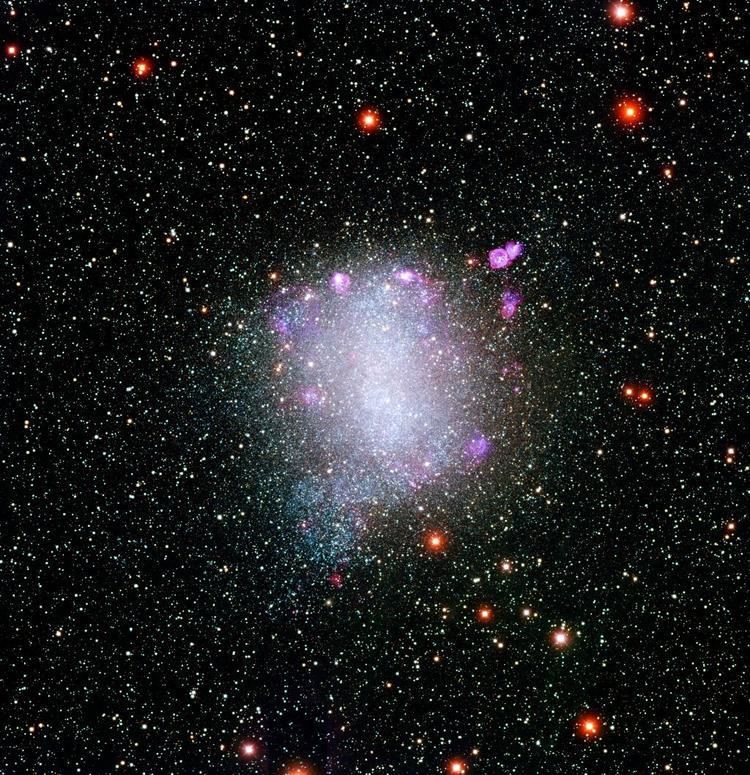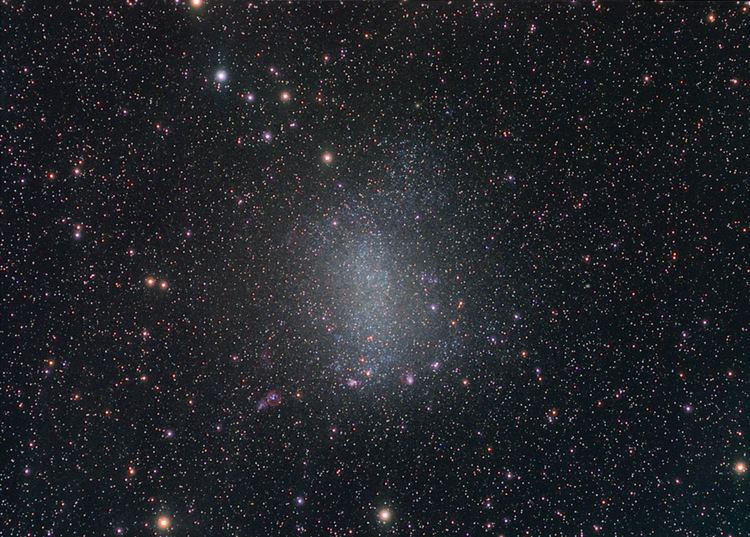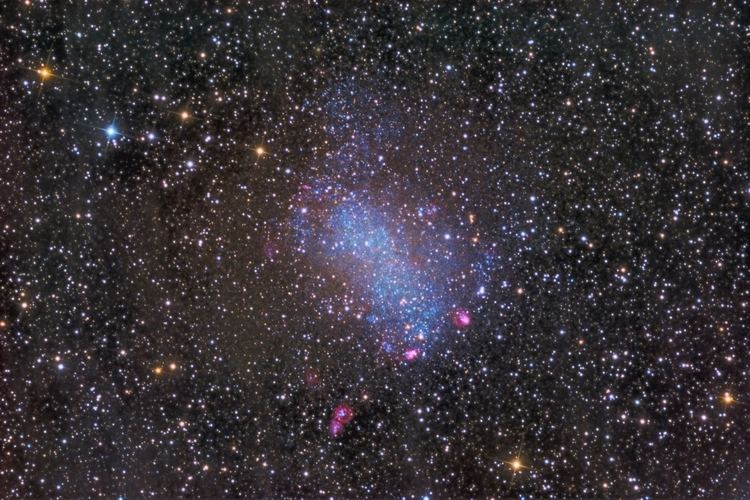Right ascension 19 44 56.6 Redshift -57 ± 2 km/s Apparent size (V) 15′.5 × 13′.5 Magnitude 9.3 Apparent magnitude (V) 9.3 | Declination −14° 47′ 21″ Type IB(s)m Distance to Earth 1.631 million light years | |
 | ||
Similar IC 1613, NGC 185, NGC 147, NGC 55, NGC 300 | ||
NGC 6822 (also known as Barnard's Galaxy, IC 4895, or Caldwell 57) is a barred irregular galaxy approximately 1.6 million light-years away in the constellation Sagittarius. Part of the Local Group of galaxies, it was discovered by E. E. Barnard in 1884 (hence its name), with a six-inch refractor telescope. It is one of the closer galaxies to the Milky Way. It is similar in structure and composition to the Small Magellanic Cloud. It is about 7,000 light-years in diameter.

Observational history

Edwin Hubble, in the paper N.G.C. 6822, A Remote Stellar System, identified 15 variable stars (11 of which were Cepheids) of this galaxy. He also surveyed the galaxy's stars distribution down to magnitude 19.4. He provided spectral characteristics, luminosities and dimensions for the five brightest "diffuse nebulae" (giant H II regions) that included the Bubble Nebula and the Ring Nebula. He also computed the absolute magnitude of the entire galaxy.

Hubble's detection of eleven Cepheid variable stars was a milestone in astronomy. Utilizing the Cepheid Period-Luminosity relationship, Hubble determined a distance of more than 700,000 light-years. This was the first system beyond the Magellanic Clouds to have its distance accurately determined. (Hubble continued this process with the Andromeda Galaxy and the Triangulum Galaxy). His distance to the galaxy was way beyond Harlow Shapley's value of 300,000 light-years for the size of universe. In the paper, Hubble concluded the "Great Debate" of 1920 between Heber Curtis and Shapley over the scale of the universe and the nature of the "spiral nebula". It soon became evident that all spiral nebulae were in fact spiral galaxies far outside our own Milky Way.

An analysis of Hubble's plates by Susan Kayser in 1966 remained the most complete study of this galaxy until 2002.
In 1977, Paul W. Hodge extended the list of known H II regions in Barnard to 16. Today, there are over 150 of these regions catalogued in Barnard's Galaxy.
